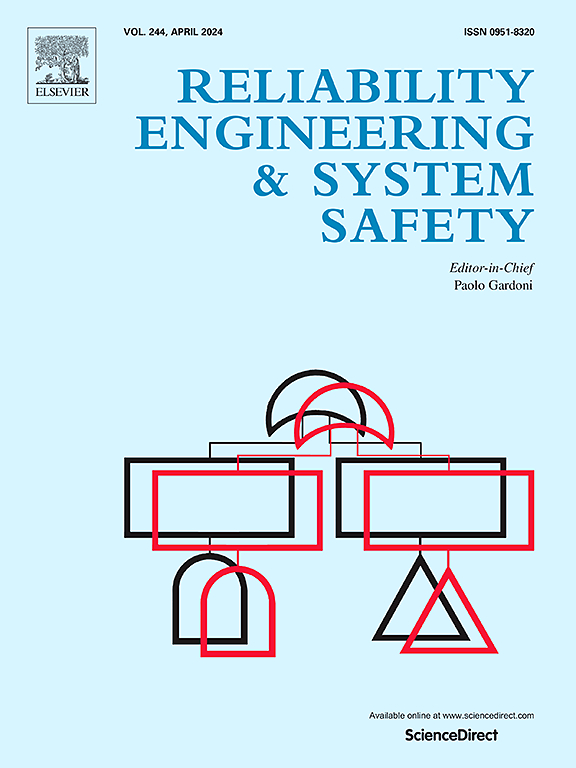Knowledge embedded spatial–temporal graph convolutional networks for remaining useful life prediction
IF 9.4
1区 工程技术
Q1 ENGINEERING, INDUSTRIAL
引用次数: 0
Abstract
Accurate prediction of remaining useful life (RUL) is crucial for prognostics and health management of equipment. Deep learning methods have gained significant attention in this field, leveraging the abundance of monitoring data captured from sensor networks. However, these methods often overlook the spatial interactions among sensor signals. Moreover, they primarily focus on pattern extraction from sensor data and neglect the utilization of available prior knowledge that could enhance prediction accuracy and stability. To address these limitations, a knowledge-embedded spatial–temporal graph convolutional networks (KEST-GCN) method is proposed. In KEST-GCN, the relationship triplets are established based on the system structure knowledge and sensor position information. Then, these triplets are transformed into low-dimensional vector embeddings using an energy-based knowledge embedded algorithm. After that, the graph dataset is generated, where the embeddings of sensors are utilized to construct the graph edges and weighted adjacency matrix. The weights are dynamically updated by an attention mechanism. Finally, a GCN layer with a multi-head attention mechanism, an LSTM layer and a fully connected layer are employed to extract spatial–temporal degradation patterns and obtain the RUL prediction results. The effectiveness and stability of our proposed method is demonstrated using an aero-engine dataset and a cutting tool dataset, respectively.
求助全文
约1分钟内获得全文
求助全文
来源期刊

Reliability Engineering & System Safety
管理科学-工程:工业
CiteScore
15.20
自引率
39.50%
发文量
621
审稿时长
67 days
期刊介绍:
Elsevier publishes Reliability Engineering & System Safety in association with the European Safety and Reliability Association and the Safety Engineering and Risk Analysis Division. The international journal is devoted to developing and applying methods to enhance the safety and reliability of complex technological systems, like nuclear power plants, chemical plants, hazardous waste facilities, space systems, offshore and maritime systems, transportation systems, constructed infrastructure, and manufacturing plants. The journal normally publishes only articles that involve the analysis of substantive problems related to the reliability of complex systems or present techniques and/or theoretical results that have a discernable relationship to the solution of such problems. An important aim is to balance academic material and practical applications.
 求助内容:
求助内容: 应助结果提醒方式:
应助结果提醒方式:


